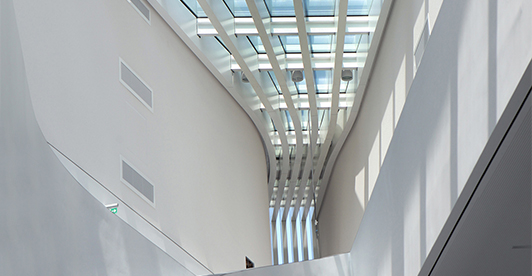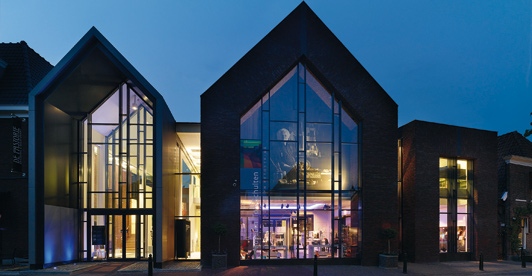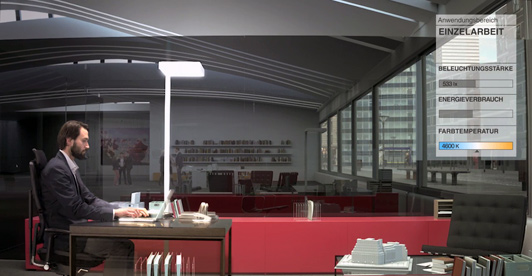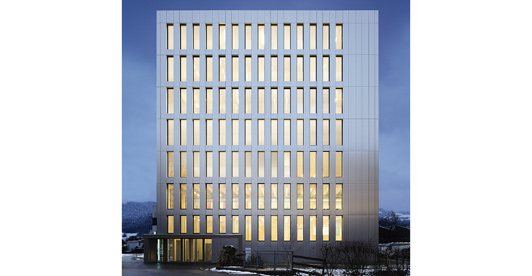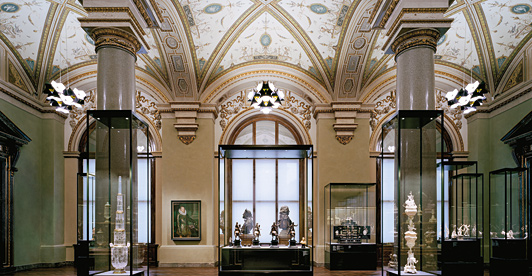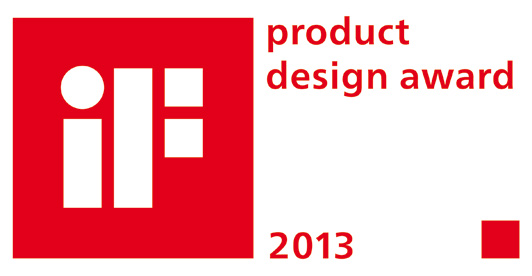Press Contact
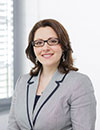
Press information 2013
-
11/2013Lighting Solution
Traditional craftsmanship in a new light
Zumtobel illuminates the new centre of the Werkraum Bregenzerwald association
Werkraum Bregenzerwald is an internationally renowned centre of competence for innovative Austrian craftsmanship in Vorarlberg. In July, the association moved to its new home in Andelsbuch: the Werkraum House designed by star architect Peter Zumthor. For this sophisticated architectural project, Zumtobel, the Austrian provider of lighting solutions, has implemented a customised lighting concept that meets the highest demands in terms of design and functionality and offers visitors a unique exhibition experience.More informationLess informationThe Werkraum Bregenzerwald association of crafts and trade has found a new home in the Werkraum House in Andelsbuch. The visionary building designed by renowned Swiss architect Peter Zumthor features a large wooden roof and a façade made of glass that makes the landscape seem to pass through. Hence, the Werkraum House serves as a kind of showcase for promoting the work of Bregenzerwald craftspeople. Eighty local master workshops joined forces to form the Werkraum association. The Werkraum House serves as a hub and meeting point for building developers and architects and also accommodates exhibitions, events, a shop and a café. The unique architecture of the multifunctional building placed special requirements on the lighting system.During the design stage, highest priority was therefore given to a flexible lighting solution to enhance the building's architecture and ensure high lighting quality. In addition, the lighting scenario creates a pleasant atmosphere for visitors and staff. The Austrian lighting expert Zumtobel was called in because both the client and the architect needed a top-class partner with international experience and premium advisory skills. Zumtobel developed a custom-made lighting concept involving a number of special solutions for the various functional areas in the Werkraum House. For the part of the building that is open to the public, where various Werkraum members exhibit their work, Zumtobel used 100% cutting-edge LED technology.
The LED option cannot fail to impress thanks to its easy integrability into a lighting management system, so that the lighting can be flexibly controlled whenever events or exhibitions are held. “Lighting is especially important when it comes to presenting the achievements of our craftspeople in the right light in a targeted manner. On the other hand, it is precisely the light, in combination with acoustics, that sets the stage for a room's atmospheric qualities. Here at the Werkraum House you can see a sophisticated combination of artificial lighting and daylight,” says Managing Director Renate Breuss. In order to ensure perfect room acoustics, the open hall of the building where events are held was fitted with a thickly cushioned coffered ceiling made from timber. Zumtobel used a specially designed suspension system to install some 160 LED spotlights of the Panos Infinity range in this area. These downlights provide uniform ambient lighting as well as especially good lighting quality and are also highly efficient. Additional accent lighting and excellent colour rendering are ensured by nearly 90 swivelling Vivo LED spotlights, also fitted with a special pendant suspension system, which are used mainly for highlighting individual exhibits. Hence, Vivo provides accent lighting, creates contrasts and puts the focus on the exhibits, ensuring a fascinating art experience for the visitor.
In order to allow simple connection of the luminaires to the power supply and lighting control system as well as integration of an emergency lighting system, the Tecton continuous-row lighting system is used. This allows quick adjustment of the lighting solution to changing requirements thanks to no-tool installation. Moreover, Zumtobel has proved its flexibility in implementing individual requirements by providing a custom solution for the staircase and sanitary areas. Special downlights were flush-mounted in the concrete ceiling. They provide ideal lighting conditions to facilitate orientation and guidance and at the same time enhance the room's architecture. For emergencies, Zumtobel has installed Puresign and Resclite LED luminaires in the building. On the basement level, perfect orientation is ensured by suspended Tecton luminaires fitted with fluorescent lamps and rugged Scuba luminaires providing uniform lighting.
Zumtobel. The Light.
-
share it
-
-
11/2013Company
Zumtobel wins “Red Dot Award” 2013 for image film
Zumtobel has received a “Red Dot Award: Communication Design” 2013 for its creative image film.More informationLess informationThe film titled “Your light in a world of change” was created in collaboration with the Boros agency and the Zeitsprung Commercial film production company. The 1:30-minute film is an impressive and emotional story of how Zumtobel seeks to provide perfect lighting quality for people while protecting the environment. “Zumtobel stands for a new quality of light: the design-oriented lighting solutions we provide originate from our vision – to create the best possible light for people and the environment. We want to use light to make work easier, create worlds of experience and improve communications and safety. The film communicates this message very successfully,” says Stefan von Terzi, Director Marketing Zumtobel, who is very pleased about the award.The plot revolves around the modern urban individual of the 21st century and the role light plays in people's everyday life. Live footage cleverly combined with 3D animations shows how lighting solutions adjust to the respective situation and people's needs in a world of change. The audience follows a man on his way through everyday life, witnessing how light makes living and working easier, enhancing his sense of well-being while increasing the energy efficiency of buildings.
“A good image film not only communicates the messages of a brand but addresses the target group and its needs in every detail. Our corporate production for Zumtobel is a perfect example of a film that credibly and emotionally communicates how a company uses innovative technology to improve the modern individual's quality of life,” says Christian Boros, CEO and Creative Director of the Boros agency, explaining the concept behind the film.
Zumtobel's image film also managed to win this year's “intermedia-globe Gold Award” and “German Design Award Special Mention” prizes.Red Dot Award
The “Red Dot Award: Communication Design” is a renowned communication design competition. This year, a total of 6812 entries from 49 countries were submitted. Members of the international jury included Taiwanese designer Aaron Nieh, Turkish art director Ali Bati and Scottish designer Jack Renwick, among others. The key evaluation criteria of the entries submitted included originality and emotional quality as well as appropriate addressing of the target group, quality of design, recognition value and relevance for society. On 18 October 2013, the prizes were awarded at a ceremony in the Berlin Concert Hall attended by some 1400 guests from all over the world. The “Red Dot” prize-winning projects will be published in the International Yearbook Communication Design 2013/2014 and displayed at an online exhibition. Moreover, the “Red Dot” has become established as a coveted international quality mark.On BOROS:
The BOROS agency was established in 1990 by Christian Boros. Employing a team of 49 people including designers, web designers, business economists, political scientist, communications experts and German philologists, BOROS develops interdisciplinary communication solutions many of which have received international awards.Zumtobel. The Light.
-
share it
-
-
11/2013Products
LIGHT FIELDS evolution: LED luminaire range for sophisticated lighting projects
Zumtobel presents the Light Fields evolution LED luminaire range for use in modern office environments involving a variety of requirements. Light Fields evolution combines uncluttered design with innovative technology: the result is an LED luminaire range comprising recessed, pendant, surface-mounted, wall-mounted and free-standing luminaires in a uniform and slim design perfectly in line with contemporary office architecture. tehleuchte mit ein-heitlicher Formensprache und schlanker Bauhöhe, die optimal auf die zeitgenössischeBü-roarchitektur abgestimmt ist.More informationLess informationNo matter whether you work at a computer or tablet PC, use a smart phone, attend a meeting or hold a presentation: the LED luminaire range cannot fail to impress on account of its perfect lighting quality without producing any glare. This is made possible by the patented micro-pyramidal optic (MPO+). The diffuser layer of the optic resolves the LED points uniformly, ensuring perfectly glare-free light. Even at high luminous flux levels, luminance is consistently reduced, providing pleasantly distributed light even at steep radiation angles. Two colour temperatures are available for the luminaire range (3,000 K and 4,000 K). With a luminaire efficiency factor of up to 105 lm/W, the luminaires reduce the building's energy consumption, thus making a significant contribution towards sustainable added value.
All luminaires of the Light Fields evolution range boast excellent lighting quality and energy efficiency levels. Innovative technologies are used in various luminaire types with the aim of providing the best light for people in many different office situations.
For the recessed, surface-mounted and wall-mounted luminaires, Zumtobel has developed the 3Dprotect reflector. The reflector (patent pending) is both protection and optic at the same time. Its 3D structure protects the LED modules during installation, preventing damage from electrostatic discharge. At the same time, the structure's high reflection factor allows to increase the luminaire efficiency level.The slimline design with a height of only 28 mm is made possible because the light emitting diodes have been integrated into the frame of the pendant luminaire. In order to obtain a well-balanced indirect/direct light ratio, LED light is emitted downwards thanks to litePrint light guide technology. The precisely calculated dot matrix of the litePrint light guide ensures uniform illumination of the complete light emitting panel. At the same time, an exactly defined light component is directed upwards, in specific regions, via openings in the luminaire housing, so that no extra LED modules are required for the indirect component.
Plenty of creative scope for modern office environments that are often modified is provided by the free-standing luminaire. Available with three different luminous flux levels (7,800, 11,000 und 14,800 lm) as well as warm and intermediate colour temperatures, the Light Fields evolution free-standing luminaire offers a variety of application options. The swarmControl technology used here is characterised by two functions that ensure a new dimension of individual lighting quality at workstations: the corridor function and the presence-based function. The fiormer primarily provides for safety and orientation, as the luminaires are dimmed up one by one by means of a built-in presence detector, thus indicating the way to the workstation. The presence-based function, on the other hand, ensures ideal lighting conditions with a mean illuminance level of up to 500 lx at the workstation, while users may adjust the quantity of light to their personal needs at any time using a control panel in the luminaire base. Neighbouring luminaires communicate via swarmControl, providing a cloud of light that creates a pleasant working atmosphere. The sensControl III function increases the free-standing luminaire's efficiency even more. The presence detector automatically switches the luminaire on and switches it off again when the workstation is left unattended. A brightness sensor monitors the illuminance level across the desktop and dims the luminaire depending on the quantity of daylight or artificial light available. Thus, up to 70 percent of energy can be saved, compared to conventional switchable free-standing luminaires.
Zumtobel. The light.
-
share it
-
-
11/2013Products
SINUS: Medical LED supply unit by Zumtobel
Zumtobel introduces Sinus, a modular LED supply unit that meets various requirements in the health care sector. While doctors and care staff need ideal lighting conditions to perform treatments and examinations, patients need ideal lighting conditions to aid their convalescence. In addition, sustainability and energy efficiency are increasingly important factors, especially for operators and investors. The system can be flexibly adjusted to rooms with one to three patient beds and includes outlets for communication and medical gases.
More informationLess informationHigh-quality lighting in hospitals makes a difference. Especially in patient rooms, natural light enhances the patients' well-being and, as a consequence, promotes their convalescence and health. However, medical staff needs perfect lighting conditions for examinations and nursing services as well. Fitted with innovative LED technology, Sinus provides room lighting (5,940 lm per bed), examination lighting (6,770 lm), reading light (830 lm) and night light (50 lm) combined in one medical supply unit. The LED room lighting with indirect light distribution creates a pleasant atmosphere in the patient room. Optionally, it can be positioned continuously anywhere over the entire length of the supply unit. The electrically adjustable LED reading light inside the horizontal Sinus supply unit allows even more flexibility when determining room layouts: lighting can be adapted to suit the arrangement and number of beds in a patient room at the touch of a button. This new scope for creative design also makes huge savings possible. In addition to the large number of functions, Sinus cannot fail to impress thanks to its clear formal language and elegant slimline design and the high-grade materials used.Components such as socket outlets, switches and phones, emergency nurse call buttons and data outlets for communications, as well as outlets for medical gases, are all unobtrusively accommodated in the Sinus system. This makes Sinus a functional supply unit which, thanks to its slimline design, is capable of making a significant contribution towards a feel-good atmosphere in patient rooms. The amortisation period of Sinus is reduced by its luminaire efficiency factor of 101 lm/W, its flexibility and long service life as well as the 5-year guarantee granted by Zumtobel for its products.
Flexibility for the benefit of patients
When developing Sinus, designer Andrea Ciotti integrated the light emitting diodes that provide reading and examination lighting exclusively in the front part of the supply unit. This makes sure that the entire length of the medical supply unit remains available for mounting a suspension bracket or a storage shelf for depositing personal items of patients.Zumtobel. The light.
-
share it
-
-
11/2013Products
ARCOS: spotlight range providing a perfect art experience
Zumtobel adds the Arcos xpert LED spotlight and the Arcos LED wallwasher to the Arcos luminaire range. With the Arcos spotlight family, David Chipperfield has created a range of luminaires that is synonymous with unobtrusive design and high lighting quality. With the new models, Zumtobel now offers an extensive portfolio for accent lighting in art galleries and museums that incorporates innovative LED technology and meets the highest conservational requirements thanks to UV and IR-free light.
More informationLess informationThanks to innovative LED and reflector technology, the spotlight is able to exploit its full potential. Arcos xpert cannot fail to impress in accent lighting on account of its high colour rendering index of Ra 94 and low colour tolerance (2-step MacAdam). Artworks and exhibits can thus be presented most authentically. The spotlight is optionally available in a warm (3000 K) or intermediate (4000 K) colour temperature. The tried-and-tested design of the Arcos spotlight has been left unchanged to allow gallery owners and museum curators to easily extend their existing luminaire portfolio by the spotlight's LED model.
The ARCOS xpert spotlight is able to respond flexibly to a variety of lighting tasks with five different replaceable optics, four different lenses and two louvre designs to prevent direct glare. Pinpoint superspot light distribution is used to highlight even the smallest details. This high-precision lighting is made possible by a patented tapering dual reflector made of PC developed in-house. The reflector is specially matched to the LED module and, in combination with selected optics, produces excellent lighting quality perfectly appropriate for the exhibit to be illuminated. The LED remains invisible.
The spotlight can be dimmed both directly on the spotlight and via DALI. The cool touch function allows to handle the spotlight with bare hands also when it is switched on, for no heat is dissipated to the spotlight housing. Moreover, the LED's service life is considerably extended through passive cooling.Linear wallwasher incorporating LED technology
In future, the Arcos LED wallwasher can be used to implement integral LED lighting solutions in art galleries and museums. The wallwasher's uncluttered design blends unobtrusively into the surrounding architecture. Thanks to a sophisticated optical solution and constant colour temperature of individual LEDs, the standard 620 mm version and the short 320 mm version of these dimmable linear wallwashers ensure uniform illumination of vertical surfaces. Zumtobel relies on top quality also in terms of materials: the housing is made of extruded aluminium section, the front sides of die-cast aluminium.Both the Arcos LED wallwasher and the Arcos xpert spotlight are optionally available in anthracite or white. The Arcos product range is Zumtobel's integral lighting solution for museums and art galleries that is based on efficient LED technology and allows the creation of superb centre-stage settings for art.
Zumtobel. The light.
-
share it
-
-
10/2013Lighting Solution
City Green Court in Prague wins World Green Building Council award
The City Green Court office building in Prague sets new standards for sustainable building not only in the Czech Republic. Awarded a prize in the “Leadership in Building Design and Performance” category by the “World Green Building Council (WorldGBC)”, the office building featuring a lighting solution by Zumtobel is a beacon project also on an international level.More informationLess informationIn September 2013, the “Leadership Awards” for green building were awarded for the first time by the WorldGBC with the aim of establishing and strengthening a worldwide network for sustainable building. Among more than 30 nominations from 13 European countries, the City Green Court office building designed by Richard Meier & Partners Architects LLP from New York emerged victorious. The jury's decision was based on the integration of cutting-edge technologies, used for the first time on an international level, the combination of which makes sure that the building consumes 56 percent less energy than other buildings.Zumtobel has supported the integral sustainability concept by providing an integrated lighting solution: the daylight-based Luxmate Professional lighting control system ensures that natural daylight is used to optimum extent and staff members can enjoy both perfect lighting condi-tions and a pleasant atmosphere. The energy-saving concept is further enhanced by the use of state-of-the-art LED luminaires, an efficient emergency lighting system and presence detec-tors.
About the World Green Building Council (WorldGBC)
The WorldGBC is a worldwide network of national green building organisations. It aims at promoting collaboration and research as well as sharpening the profile of sustainable building methods internationally.
For more information, please refer to www.worldgbc.org-
share it
-
-
10/2013Lighting Solution
A shining example of contemporary educational infrastructure
The new campus of Vienna's University of Economics and Business is Austria's most advanced university complex. The area has been designed by six international star architects. For this large-scale international building project, Austrian lighting manufacturer Zumtobel has implemented a customised lighting concept based on flexibility and efficiency.More informationLess informationAfter nearly four years of construction work, the new campus of Vienna's University of Economics and Business (WU) will open its doors in October 2013. Some 23,000 students and 1,500 staff members will be researching, studying and teaching on the premises. In an area of about 90,000 square metres, six internationally renowned architects have created a unique ensemble of buildings. The heart of the campus is the “Library and Learning Center” designed by Zaha Hadid, which includes a large auditorium and the main library, among other things. Grouped around it are five other university buildings designed by Hitoshi Abe (Sendai/Japan), Carme Pinós (Barcelona), Eduardo Arroyo (Madrid), Peter Cook (London) and Laura Spinadel (Vienna). In addition to high design aspirations, the client attached high importance to environmental considerations during erection of the buildings. The whole campus was therefore built in line with a so-called “green building” concept, which also included installation of an efficient and sustainable lighting system. Austrian lighting expert Zumtobel, based in Vorarlberg, could not fail to impress the designers and architects involved by implementing a complete customised lighting concept based on energy efficiency and flexibility. Zumtobel also boasts many years of experience in the management and handling of large-scale projects as well as comprehensive advisory know-how. For the various university buildings, Zumtobel developed custom lighting solutions incorporating numerous pendant luminaires, continuous row lighting systems, light lines and moisture-proof luminaires, and in total provided some 12,000 luminaires, in addition to a continuous row system of seven kilometres length. Zumtobel also coordinated the installation and commissioning of the luminaires, in collaboration with four electrical contractors. The order volume for luminaires and installation amounts to more than EUR 7 million. In the “Library and Learning Center” as well as in three department buildings accommodating various university faculties and administration units, Zumtobel has installed some 5000 LED luminaires from the Panos Infinity range. These downlights mainly illuminate the staircases, corridors and escape routes in the building as well as the sanitary areas. They provide guidance to students and university staff, help them find their way and ensure pleasantly bright ambient lighting. In doing so, Panos Infinity features particularly high lighting quality and excellent efficiency. During normal operation, the LED luminaires consume significantly less energy than any comparable conventional solution and boast a longer service life as well. Compared to conventional standards, the LED solution has a payback period of only five to six years. Over and above this, the LED downlights can easily be integrated into a lighting management systems, so that the lighting in the staircases and sanitary areas of the university buildings can be efficiently controlled using presence detectors. In department building D3, Zumtobel has also demonstrated its flexibility in meeting individual requirements by developing a special housing for the downlights, since they could not be installed in the concrete ceiling. In these areas, light is also provided by Slotlight II luminaires. The continuous light line without a luminaire unit looks light a narrow lighting channel and provides pleasantly uniform lighting. Slotlight II hase also been installed in the staircase of the “Library and Learning Center”. The offices in the three largest department buildings are illuminated by Claris II pendant luminaires. The minimalist luminaire blends harmoniously into the room, providing accurate light direction and perfect glare control – which is especially important at computer workstations. In the basements and technical services centres of the five building complexes, Zumtobel has also installed the rugged Scuba luminaire, which is particularly soil- and water-resistant. Its uniform illuminance also ensures perfect orientation. More information on the “WU campus” project:Client: Projektgesellschaft Wirtschaftsuniversität Wien GmbH
Contractor: Bundesimmobiliengesellschaft (BIG); Wirtschaftsuniversität Wien (WU)
Architects:Library and Learning Center (LC): Zaha Hadid Architecture, HamburgDepartment D1 / Teaching Center: BUSarchitektur ZT GmbH, ViennaDepartment D2 / Students Center: Atelier Hitoshi Abe, Sendai (Japan)Department D3 / Administration: CRABstudio, LondonDepartment D4: Estudio Carme Pinós S. L., BarcelonaExecutive Academy: NO.MAD Arquitectos, Madrid
Zumtobel. The Light.-
share it
-
-
07/2013Lighting Solution
Brilliant colours for a natural art experience
On 25 April 2013, the Ton Schulten Museum was opened in Ootmarsum. The Dutch artist is known for his expressive pictures painted in bold colours, the brilliance and vitality of which are enhanced to optimum effect by the right light. Due to its excellent colour rendering properties, the artist opted for an LED lighting solution by Zumtobel, which also minimises potential damage and lowers energy consumption by 50 percent.More informationLess informationThe newly opened “Museum Ton Schulten” in Ootmarsum is far more than an artistic biography of Ton Schulten, one of the most successful and renowned contemporary Dutch painters. In several rooms, he not only displays his own oeuvre, but also selected works of art by a number of international artists. He placed particular emphasis on an authentic, yet gentle lighting concept. In Zumtobel he found a partner who was able to perfectly implement his demands in terms of colour rendering quality, flexibility and conservational requirements.
Excellent colour rendering
Most of Ton Schulten's paintings show landscapes where nature shines in all her colourful splendour. Visitors are supposed to get the impression of standing right in the middle of such a landscape, experiencing it in natural sunlight. Against this background, the lighting solution faces particular challenges, for while bold blue or green shades are presented to optimum effect in cool white light, warm white is ideal for red and yellow. Hence, colour rendering and colour brilliance were very important aspects in Ton Schulten's decision for the right lighting solution. “I am highly satisfied with the result, because the paintings are presented in a very natural light so that they can unfold their full effect,” says a pleased Ton Schulten.
The solution was provided by a customised version of the Arcos LED spotlight system boasting a colour rendering index of up to Ra > 95 at 2700 K. In order to set the perfect lighting stage for presenting the artworks, a total of 230 spotlights were installed on Supersystem tracks. The dimming level can be adjusted directly on the spotlight, which allows individual adjustment to any exhibit. In addition, a variety of beam angles and an oval outline lens ensure sufficient flexibility to solve the most diverse lighting tasks.Gentle and efficient illumination
However, the LED lighting solution was able to outcompete conventional halogen lighting not only due to excellent colour rendering, but also thanks to its compliance with conservational requirements. “As the new generation of LED luminaires emits significantly less heat towards the precious exhibits and the light they generate is nearly completely free from IR and UV radiation, we can ensure gentle illumination for sensitive objects as well,” says Barry Harmes from Zumtobel who was involved in the project from the beginning.
This was further corroborated by a study conducted by Zumtobel in collaboration with the Lighting Engineering Department of Darmstadt University of Technology. As part of this study, the quality of various light sources was tested on a real object of art, Picasso's “Harlequin” drawing, using predefined evaluation parameters. Basically, potential damage caused by the LED spotlight is significantly lower at comparable colour temperatures. At the same time, energy efficiency is increased by the LED spotlight, as the input of electrical energy is around 50 percent less than with a halogen spotlight. An additional benefit is the LED's long service life, combined with reduced maintenance effort.Zumtobel Research
»Measurement of lighting of Pablo Picasso‘s “Harlekin” (1916) at the Lindau Town MuseumZumtobel. The Light.
-
share it
-
-
05/2013Company
Zumtobel wins intermedia-globe gold award at the WorldMediaFestival
On 15 May 2013, the World Media Award ceremony took place in the context of the WorldMediaFestival in Hamburg.More informationLess informationThe Zumtobel image film won an intermedia-globe gold award in the “Public Relations /Company Philosophy and Portrait” category. The Boros agency and the Zeitsprung Commercial GmbH film production company jointly created a 1:30-minute film, which is impressive in terms of both visual effects and narrative. “We want to use light to create worlds of experience, make work easier and improve communica-tions and safety while always remaining fully aware of our responsibility to the environment. The film communicates this message very successfully and in accordance with the taste of its target group,” says Stefan von Terzi, Director Marketing Zumtobel, who is very pleased about the award.
The plot revolves around the modern urban individual of the 21st century and the role light plays in his everyday life. Live footage cleverly combined with 3D animations shows how lighting solutions adjust to the respective situation and people's needs in a world of change. The audience follows a man on his way through everyday life, witnessing how light makes living and working easier, en-hancing his sense of well-being while increasing the building's energy efficiency. It is an impressive and emotional story of how Zumtobel seeks to provide optimum lighting quality for people while protecting the environment. “A good corporate production not only communicates messages but also reflects a deep understanding of the target group addressed and its needs. The Zumtobel image film is a great example of how companies use state-of-the-art technology to improve modern people's quality of life,” explains Christian Boros, CEO and Creative Director of the Boros agency, the concept behind the film.
Zumtobel. The Light.
-
share it
-
-
04/2013Lighting Solution
A “shining example”
Sustainable lighting solution by Zumtobel for the first timber hybrid high-rise building
The LifeCycle Tower One in Dornbirn is the world' first uncased timber high-rise building. It sets new standards with respect to sustainability, efficient use of resources and quality of life. For this award-winning building, Zumtobel has developed a trend-setting lighting concept that includes an intelligent lighting control system to maximise lighting comfort and increase efficiency.More informationLess informationThe LifeCycle Tower One (LCT One) is the world's first eight-storey timber hybrid high-rise building.Based on the latest scientific findings in combination with innovative technologies and a resource-saving method of construction, LCT ONE indicates the way into the future of urban architecture.Inside the building, one can see the supporting structure made of timber; the external façade is clad in aluminium. The prototype was opened in 2012 and is mainly used for office purposes. For the LCT One, Zumtobel has developed an integral lighting concept including lighting management, emergency lighting and alternative lighting solutions for the offices. Apart from the modern and perfectly glare-free office luminaires as well as energy-saving LED corridor lighting, Zumtobel's Luxmate Litenet lighting management system is used in the LCT One. It controls the lighting, emergency lighting and blinds.Intelligent lighting management
Luxmate combines complex system features such as use of daylight, presence detectors, integration of emergency lighting, and predefined room profiles in one central unit that can be easily operated. The daylight available is perfectly integrated into the lighting solution by the control system. The daylight sensor on the roof of the building continually monitors the incident light, ensuring that in each room only the quantity of artificial lighting is added that is required. Luxmate also controls the blinds, which in automatic mode can be adjusted to the prevailing lighting conditions and sunlight. This prevents glare and excessive build-up of heat in the rooms. Another feature of the lighting control system is the flexible change of colour temperatures and the quantity of light. Dynamic lighting demonstrably has a major impact on people's sense of well-being and productivity. Carefully thought-out lighting scenes are defined in advance, stored, recalled and modified as required. Moreover, Luxmate controls the entire LED emergency lighting system. This ensures low maintenance effort.The latest in lighting technology: flexible and user-oriented
Panos Infinity high-performance LED spotlights, among others, have been installed in the ceiling. The general lighting system also includes Supersystem spots for accent lighting. The lighting concept is backed by presence detectors, which allow for intelligent control and lighting.This means that perfect lighting is available only when it is actually needed. The presence detectors used for the lighting solution also control the heating. In order to reduce energy consumption, presence detectors have been installed in the transit areas, corridors, toilets and in the staircase as well.Exemplary energy efficiency
Using an intelligent lighting management system such as Luxmate, energy can be saved on a permanent basis: presence detectors or pre-defined switch-on times allow for potential savings of 20 to 40 percent. By making optimised use of daylight, up to 75 percent of lighting energy can be saved. Using dimmable luminaires, energy consumption can be reduced further by some 25 percent. Properly coordinated control of lighting and blinds reduces the cooling load of a building and improves lighting quality as well. The result is greater independence in the face of energy price increases and a sustainable drop in costs and CO2 emissions.Zumtobel. The Light.
-
share it
-
-
03/2013Lighting Solution
Contemporary lighting art by Zumtobel at the Kunstkammer Wien
One of Austria's most important cultural projects is the reopening of the Kunstkammer (lit-erally, chambers of art and natural wonders) in Vienna. Zumtobel was able to make an es-sential contribution ensuring the state-of-the-art presentation of this unique collection by providing a very special lighting solution.
More informationLess informationAfter having been closed for more than 10 years, the Kunstkammer was presented to the public again on 1 March, with the explicit goal of making the history of the Habsburg collection and its most important figureheads known to an interested contemporary audience. The highest conservation requirements, content-related didactic criteria, but also emotional factors played an equally essential role for the new presentation of the Kunstkammer. Yet, the 2,200 exhibits included in the collection could not be more different in nature: among the highlights are outstanding works of the goldsmith’s art, such as the famous Saliera by Benvenuto Cellini, first-rate specimens of sculpture, such as the Krumau Madonna, masterly bronze statuettes, filigree ivory objects, but also precious clocks, games and scientific instruments.Fact boxZumtobel has developed a customised LED lighting solution in order to obtain a highly differenti-ated, gentle and effective illumination of the various objects on display. “The point was literally to present the objects in the best possible light. All exhibits are originals, and each of them has its very special aura that we want visitors to be able to feel and experience,” says Sabine Haag, Gen-eral Director of the Kunsthistorisches Museum. At the heart of the lighting solution is the Starbrick, a Zumtobel Masterpiece developed in collaboration with Danish-Icelandic artist Olafur Eliasson. Boasting unpretentious elegance and multi-functionality, the Starbrick is the only representative of contemporary art and cutting-edge technology in these rooms of the museum that were opened for the first time in 1891. The installation includes a total of 51 Starbrick assemblies consisting of four modules each, especially designed for illuminating the unique and sensitive works of art. Additional direct light is ensured by integrated Supersystem spotlights and indirect light is provided by a Panos Infinity module, while one of the Starbrick's surfaces that is directed downwards doubles as emergency lighting. “Due to the height of the ceiling, we had to increase the levels of light intensity, but the original shape of the Starbrick remained unchanged. Taking the historical rooms into par-ticular consideration, a highly specific Starbrick assembly was created, so that the modules work like a picture, like stars in the sky,” explains Olafur Eliasson.
In addition to LED Supersystem spotlights mounted on the walls, single Supersystem spotlights were also installed in the showcases. Especially in the showcases, each of them a highly sensitive closed system, the benefits of LED technology can be fully exploited. Thus, light-emitting diodes not only boast a long service life and high energy efficiency, combined with reduced maintenance cost, but also ensure an effective and at the same time gentle presentation of the exhibits. More-over, the light colours can be individually matched to the colours and materials of the exhibits, so that they can unfurl their full charm and allow visitors to experience them authentically.
"Illuminating this significant and unique collection in a contemporary way has been a special project for us. In collaboration with architects, designers and Olafur Eliasson we managed to develop a lighting solution that is in line with the new concept of the Kunstkammer, meeting the most de-manding conservation requirements and providing the best light for an unrestricted enjoyment of art,” says Reinhardt Wurzer, Director International Projects, Zumtobel Lighting.
About the Starbrick
Four individual works of lighting art, the Masterpieces, have been created in close cooperation between Zumtobel and international architects, designers and artists. The Starbrick is a versatile lighting module. Its basic structure is a cube, on whose six surfaces additional cubes have been placed at an angle of 45°. These additional cubes serve as connectors to combine several Star-brick modules.
For more information about the Starbrick see www.starbrick.info.About Olafur Eliasson
Olafur Eliasson was born in Copenhagen in 1967, where he studied at the Royal Danish Academy of Fine Arts. In 1995, he established the Berlin-based Studio Olafur Eliasson, a laboratory for spa-tial research, where jointly with a team of architects, art historians as well as materials and lighting experts he creates works of art such as extensive installations, photo series and sculptures.Client
Kunsthistorisches Museum (Museum of Art History), Vienna Architecture Büro HG Merz Architekten, Stuttgart Lighting design Die Lichtplaner, Torsten Braun, Limburg Lighting concept Symetrys, Herbert Resch, Lustenau Electrical consultants IB Süd Wien Lighting solution Zumtobel Starbrick Masterpiece (special design), custom version of single Supersystem spotlights installed in showcases, wall-mounted Supersystem spotlights (cornices and capitals), Onlite LPS emergency lighting Zumtobel. The Light.
-
share it
-
-
01/2013Products
Four to score
Zumtobel quartet wins iF product design award 2013
Zumtobel was able to demonstrate its design expertise at the iF International Forum Design. As many as four products by the Austrian luminaire manufacturer received the 2013 iF product design award for their outstanding product design and efficient lighting technology. The Discus Evolution spotlight system, the Elevo LED spotlight, the Pan recessed LED lu-minaire and the Onlite Puresign 150 escape sign luminaire could not fail to impress the jury with their design and innovative power.More informationLess informationDiscus Evolution – LED spotlight system
The Discus Evolution LED spotlight system results from further development of an existing luminaire and cannot fail to impress on account of its perfectly matched light source and optic. The spotlight's flat design is now even more contemporary and minimalist. The delicate yet robust design of the spotlight created by the internationally renowned Vienna-based EOOS design studio was created for accent lighting and sales-boosting presentation of goods. The spotlight's innovative thermal management using a passive cooling system with radial fins is an integral part of the de-sign concept. Discus Evolution is available with an unobtrusive black or white housing and suitable both for installation on tracks and for recessed installation.
Elevo – LED spotlight
With just 3.5 cm, the flat Elevo LED spotlight is reduced to minimum height. It emphasises façade features, relief slabs and projecting features, backlights surfaces uniformly and sets tall columns and portals centre stage with equally striking effectiveness. The flat, compact design of the Elevo LED spotlight turns it into an inconspicuous integral part of the façade that is invisible to passers-by yet highly effective. Elevo's design was created by the internal product development team of Zumtobel Lighting GmbH.
Pan – recessed LED luminaire
Product development of the Pan recessed LED luminaire focused on accentuating windows, para-pets and alcoves. Thanks to its extremely compact design, the Pan recessed luminaire can be completely integrated into the façade structure. An anti-glare device especially developed for this luminaire eliminates any trace of undesired glare. Precise light distribution sets Pan clearly apart from bulky floodlights that illuminate large areas of façades and look out of place in the daytime. The Pan recessed LED luminaire was created by the internal product development team of Zumtobel Lighting GmbH.
Onlite Puresign 150 – emergency lighting
Zumtobel is also collaborating with the renowned EOOS design studio to develop escape sign lu-minaires boasting clear functionality and elegant shapes. At a width of just 20 mm, the Puresign 150 luminaire is strikingly slim, even in the duplex version. Thanks to cutting-edge LED and lighting technology, the pictograph is illuminated highly effectively and uniformly. Rotatable ERI spots on the underside ensure that the emergency luminaires can be specifically adjusted to the building's requirements. For the new generation of Puresign, four new installation options have been added to the existing product portfolio: recess into walls and ceilings, surface mounting using cords, and a remote box version.
iF design
The iF awards rank among the most important design labels worldwide. Winners are chosen by independent juries comprising internationally renowned designers, businessmen and professors according to specific pre-defined criteria. Each year, the best designs of innovative companies are given awards in various categories. The iF award is considered an indicator of future-oriented design trends and product innovations. Entries for the famous design award included a total of 3,011 products submitted by more than 1,920 competitors. 981 of these products have won an award. 75 of all award winners from these three competitions will be given the iF gold award for special design performance during the prize awarding ceremony to be held at the BMW World in Munich on 22 February 2013.Zumtobel. The Light.
-
share it
-
Presse Newsfilter
Downloads
RSS-Feed
» RSS feed
Videos
» Zumtobel YouTube channel

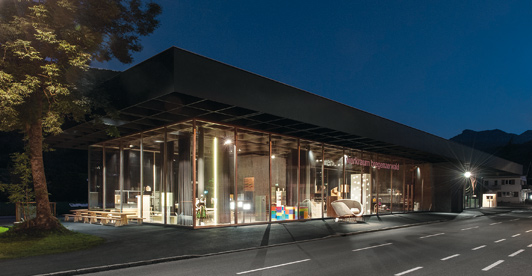










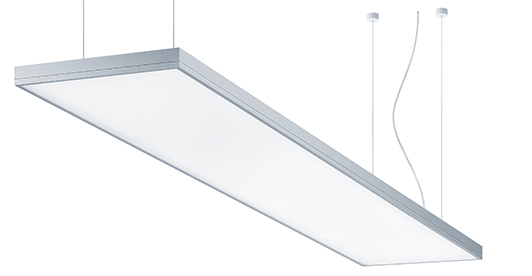




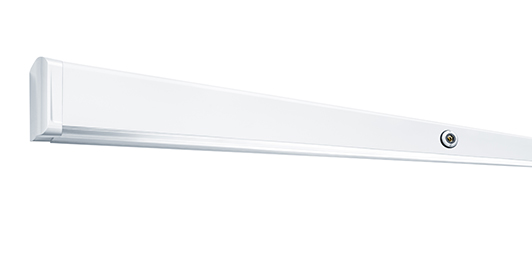



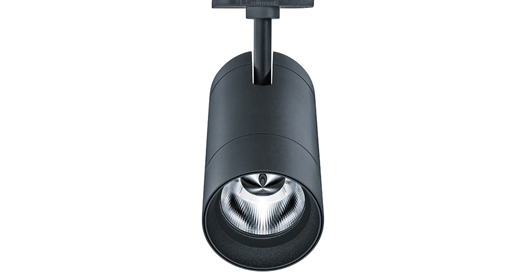



.jpg)




